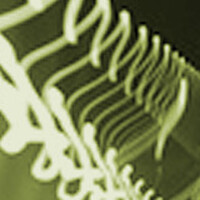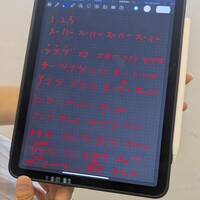Scholars Forum post
Blog post
前言
因為我從台中來台北參加跨藝計畫(ArtCross Project)的關係,觀察4位編舞家的排練時間較少。我很珍惜能參與觀察的機會,也很享受編舞家與舞者們工作的氛圍與歷程,也常常希望我的在場不會太打擾群體之間很緊密甚至很私密的溝通互動時光。
剛好我在比較前期觀察了編舞家董怡芬(TUNG I-Fen)與賴翠霜(LAI Tsui-Shuang)的排練,在較後期觀察了 Nguyen Ngoc Anh 跟 Alethia Antonia 的排練,因此先以前兩者為一組和後兩者為一組的方式,從編舞策略與身體風格方面,分別談談我的粗淺觀察,做為回饋。
Intro
Due to my participation in the ArtCross Project from Taichung, I had less time to observe the rehearsals of the four choreographers. I cherished the opportunity to be involved in these observations and thoroughly enjoyed the atmosphere and process of the choreographers and dancers working together. I often hoped that my presence would not overly disturb the close and sometimes very intimate communication and interaction among the group.
Coincidentally, I observed the rehearsals of choreographers TUNG I-Fen and LAI Tsui-Shuang in the earlier stages and the rehearsals of Nguyen Ngoc Anh and Alethia Antonia in the later stages. Therefore, I will first discuss my preliminary observations of the former two and then the latter two, focusing on their choreographic strategies and physical styles as feedback.
一、從舞者個人敘事發展的編創策略:怡芬、翠霜
編舞者怡芬與翠霜在前期排練階段,都讓每位舞者分享個人敘事與看法。怡芬探詢的是第一次意識到自己有身體知覺的深刻印象;而翠霜請舞者分享對美與醜的一些想法。從語言分享到身體動作,這不僅僅只是詮釋或轉譯,更多的是挑選與捨棄,再編纂運用身體媒材的特色。更不只是去呈現語意,而是去挑戰,去質疑,去翻轉語意。
從我的觀察,怡芬的編創策略是去回溯並創造那位舞者當時身體會那樣感覺的情境,用其他舞者的身體去建構情境,強化放大那位舞者敘事中的那個知覺,讓從麥克風傳出的故事語意,用身體直接體現出來。這就很像用大大的引號顯目地標示出來『那個感覺』,後面跟隨著一連串的然後呢?那是什麼?身體的立即回應?…之類的問題,讓陳述的舞者在情境中能隨之展現出那個曾有的知覺。
而翠霜的編創策略,從我看來,則更多是轉化與意象化,也就是用意象回溯、倒轉與暫留的方式編纂場景與身體影像。在排練過程中先嘗試了各種語言陳述,以及各種醜陋與美麗的身體姿態。然後再揀選、捨棄、再創,讓美與醜的討論先限縮到選擇變成瓢蟲或蚯蚓的二選一選擇權力。由舞者們組成的形似瓢蟲的姿態動作,或是蚯蚓般的手臂連結,都呈現出一種美感。這樣的身體化,搭配整體畫面像影像般的慢動作停留懸置,讓開頭關於兩種蟲類是美或醜的選擇擱置、延異,看似並未直面論述美醜,卻又用身體展現回應了刻板印象。
兩位舞者採用不同的編創策略去回應靈感來源,無論是舞者自己的身體故事、或是舞者自己的看法與評價,都讓我觀察到身體與語言之間交互參照與發展的多種可能性。這讓我更好奇編舞者是如何從舞者敘事中挑選她要的元素,以及如何決定與編排運用肢體與動作的方式?
1. Choreographic Strategies Developed from Dancers’ Personal Narratives: I-Fen and Tsui-Shuang
In the early stages of rehearsals, choreographers I-Fen and Tsui-Shuang had each dancer share their personal narratives and perspectives. I-Fen explored the dancers’ first deep impressions of their bodily awareness, while Tsui-Shuang asked dancers to share their thoughts on beauty and ugliness. This process transitioned from verbal sharing to physical movement, involving not just interpretation or translation, but also selection and omission, utilizing the unique characteristics of the body as a medium. It was not merely about presenting semantics but about challenging, questioning, and subverting them.
From my observations, I-Fen’s choreographic strategy involved revisiting and recreating the situation in which the dancer experienced that particular sensation. She used other dancers' bodies to construct the scene, amplifying the perception described by the narrating dancer, making the story conveyed through the microphone directly embodied. It was akin to placing a large, prominent quotation mark around ‘that feeling,’ followed by a series of questions like “And then?” “What was it?” “What was the body's immediate response?” etc., allowing the narrating dancer to manifest that sensation within the constructed scenario.
On the other hand, Tsui-Shuang’s choreographic strategy seemed more about transformation and visualization, using imagery to revisit, reverse, and pause scenes and body images. In the rehearsal process, she experimented with various verbal expressions and different ugly and beautiful body postures. She then selected, discarded, and recreated, narrowing the discussion of beauty and ugliness to a binary choice between a ladybug or an earthworm. The body movements resembling ladybugs or the arm connections mimicking earthworms embodied a form of beauty. This embodiment, paired with the overall slow-motion suspension of the scene, postponed and deferred the initial discussion about whether the two insects were beautiful or ugly. It appeared to avoid directly addressing the issue, while the body performances subtly responded to the stereotypes.
Both choreographers adopted different strategies to respond to their sources of inspiration. Whether it was the dancer's own body story or their opinions and evaluations, I observed the various possibilities for interaction and development between body and language. This makes me curious about how the choreographer selects the elements she wants from the dancers’ narratives, and how she decides and choreographs the way to use bodies and movements?
二、控制部分肢體—「凍結的」和「鎖住的」身體限制與創意:Alethia, Anh
Alethia 和 Anh 都選擇了讓舞者控制部份身體的動作風格,初期也都讓舞者們嘗試並展現每個人身體的各種可能性,然後再回到限制或控制部分身體的實驗實踐上發展,形成獨特身體語彙。
Alethia運用凍結(freeze)身體的力道與姿勢,以及控制大部分肢體並讓身體各部位獨立(isolation)做小範圍震動(popping)的方式,讓大部分重心多半往下的下律動(down-beat)動作風格,因為加上像是吸氣然後屏息般的凍結質地,而有了令人驚喜的上律動感(up-beat)。這也讓動作在時間上造成延異與延展的動感。
而Anh則是以鎖住(lock)關節的方式,讓手肘與膝蓋這樣最主要能大範圍活動的關節鎖住,反而創發出非常靈活的手腕與手部動作。這樣的限制,讓手部與腳部的細碎多樣轉動方式和如繪圖般的多變空間路徑,更凸顯出在整條手臂和整條腿部都需伸直的情況下,如何用軀體脊椎扭轉動力和跨部髖關節的拉扯來快速進行動作。身體並沒有因鎖住而被鎖住,創意與生命力舞者們的身體創造出靈活有趣的動律與飛翔方式。
於是,在編創中進行身體動作的實驗與嘗試,讓此種身體回應適應並創造出動作,與編舞者創意交織下,讓舞作的身體動態變得如此鮮明且有趣。這讓我不禁想像,下一階段的實驗與發展,會到繼續發展到什麼樣貌?
2. Controlling Parts of the Body—“Frozen” and “Locked” Body Constraints and Creativity: Alethia and Anh
Alethia and Anh both chose to develop a movement style where dancers control specific parts of their bodies. Initially, they allowed the dancers to explore and showcase the various possibilities of their bodies. Then, they returned to experimenting with limiting or controlling certain body parts, developing a unique bodily vocabulary.
Alethia used the technique of freezing the body's force and posture,and isolating individual body parts for small-range popping movements. This down-beat movement style, with its weight predominantly grounded, was contrasted by surprising up-beat moments created by the freezing quality, akin to inhaling and holding one's breath. This technique created a sense of temporal delay and extension at moments.
Anh, on the other hand, employed a locking technique, where major joints like elbows and knees were locked, resulting in highly flexible wrist and hand movements. This constraint led to intricate, varied rotations of the hands and feet, and complex spatial pathways like drawing on the air. The body had to adapt, utilizing spiral motion and hip joint pulls to perform rapid movements while keeping the arms and legs straight. The body was not truly “locked” despite the constraint, as the dancers' creativity and vitality generated flexible and created dynamics in various flying patterns.
Thus, experimenting the possibility of bodies in choreography allowed the dancers to adapt and create new movements. The interplay between the dancers' bodies and the choreographers’ creativity made the physical dynamics of the performances vivid and fascinating. This makes me wonder: what will the next stage of experimentation and development lead to?
結語
群我關係—連結、連結、請同在
在排練最後階段,4位編舞者都在和舞者工作微調身體的質地與整體細節,我注意到每位編舞者都特別有提到「連結」這個概念。
即使4位編舞家的編創作品中,有相當不同的群我關係。怡芬的作品中,舞者個人敘事和身體態度與特質,個別性最鮮明;Alethia作品常讓群體與一個人彷彿相對、卻又有來有往的身體對話呼應,但小組交錯時又常接收對方質地移轉再發展;翠霜的作品也常讓群體與個體相對應,但兩者之間往往是主題動作和主題動作之變化發展的傳遞,然後進入共同律動而成為群體;Anh的作品則彷彿舞者動作永遠在群體動律之中,無論是大群小群或自成一群。然而,這樣的群體動律又往往能襯托出個體身體的獨特存在。這讓我很想探詢,4位編舞家在安排群體、分組,與獨舞等各種組合時,想藉由特定群我關係之安排所傳達的編創意念與寓意為何?這和團體內部原有動力與跨文化語境中溝通之關係為何?
然而,無論是哪一種群我關係,編舞者在最後修整階段都強調要「連結」。包括動作與動作之間的呼應,舞者與舞者之間的配合協調,更多的是眼神和情感的交流與確認。那是一種請舞者們同在,請舞者確認個體與群體都共同存在般的進入展演狀態,也是編舞者們給來自不同背景文化的年輕舞者們最重要的練習課題。
因此,在成果展演的劇場中,我感受到的是大家共同凝聚能量的同在力量,也是此次「跨藝計畫」創意交流的目的—「連結」。因為願意去「連結」,因為身心、個體與群體的緊密連結,所以舞蹈存在。
Conclusion
Relationship Between Individual and Group—Connecting, Connection, and “Being Here”
In the final stages of rehearsals, all four choreographers worked with the dancers to fine-tune the qualities of movements and details of the dance. I noticed that each choreographer specifically mentioned the concept of “connecting.”
The emphasis on connection was clear, despite the significantly different relationships between individuals and groups in the works of the four choreographers. In I-Fen’s work, the dancers’ personal narratives, body attitudes and characteristics were the most distinctive. In Alethia’s work, the group and an individual often seemed to be in opposite positions, yet alwayes engaged in a bodily dialogue with calling and response to each other. The different groups often run across each other but receive and develope the movements shifts from one another. Tsui-Shuang’s work often also corresponded between the group and the individual, but the interaction typically involved the transmission and development of thematic movements and variations, which then entered into a common rhythm to form a group motion. In Anh’s work, it seemed as if the dancers’ movements were always within the group's dynamic rhythm, whether they were in large groups, small groups, or acting alone. However, the group dynamics often bring out and even highlighted the individual’s unique bodily presence. This makes me want to inquire, when the four choreographers arrange various combinations such as groups, partnering, and solo dances, what are the choreographic ideas and meanings they want to convey through the arrangements of specific group relationships? What is the relationship between this and the original dynamics within the group and communication in a cross-cultural context?
Regardless of the type of relationship between the individual and the group, the choreographers emphasized the need for “connectng” during the final refining stages. This included the response between movements, the coordination and synchronization between dancers, and, more importantly, the exchange and confirmation of eye-contact and emotions among dancers. It was a way of inviting the dancers to be present, to confirm the coexistence of individuals and the group as they entered the performance state. This was also the most important practice topic given by the choreographers to the young dancers from different cultural backgrounds.
Therefore, in the theater during the final performance, I felt the cohesive energy of everyone being present together, which is also the purpose of this “ArtCross Project”—to foster creative exchange and connection. Because of the willingness to connect, and the tight connections between body and mind, individuals and groups, dance exists.
Posted by

Szu-Ching 思菁 Chang 張

